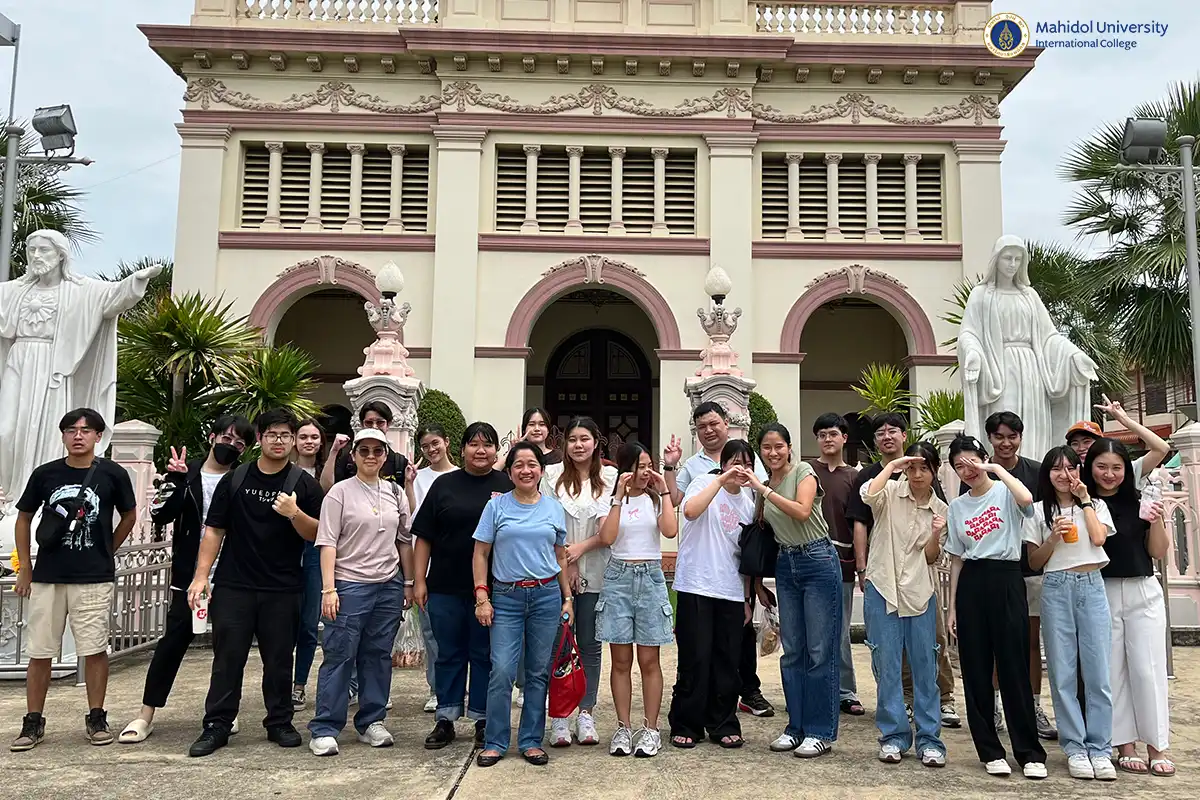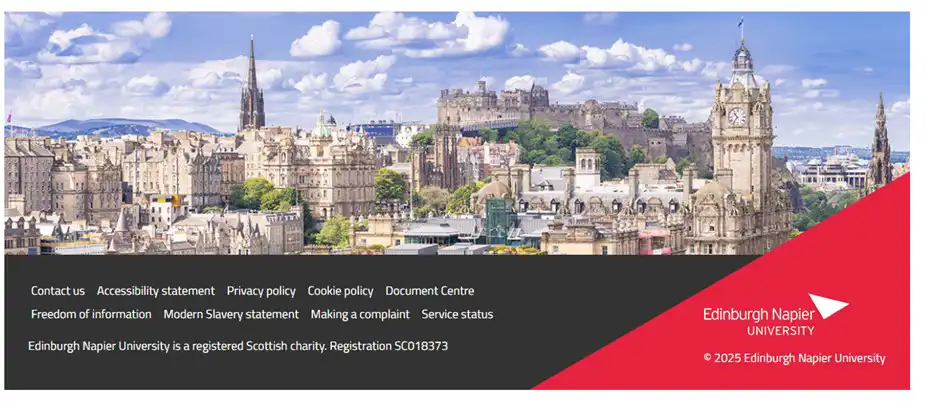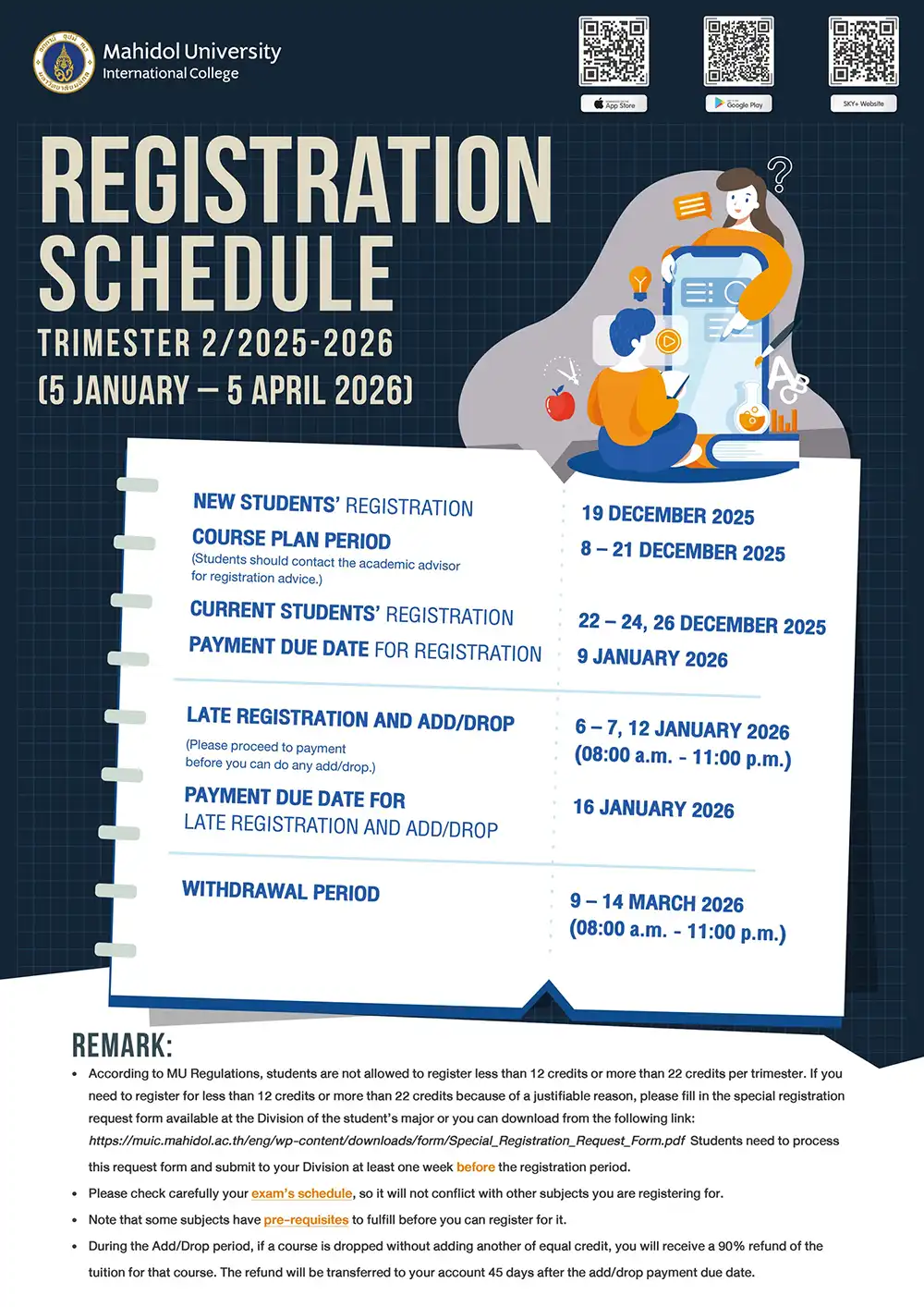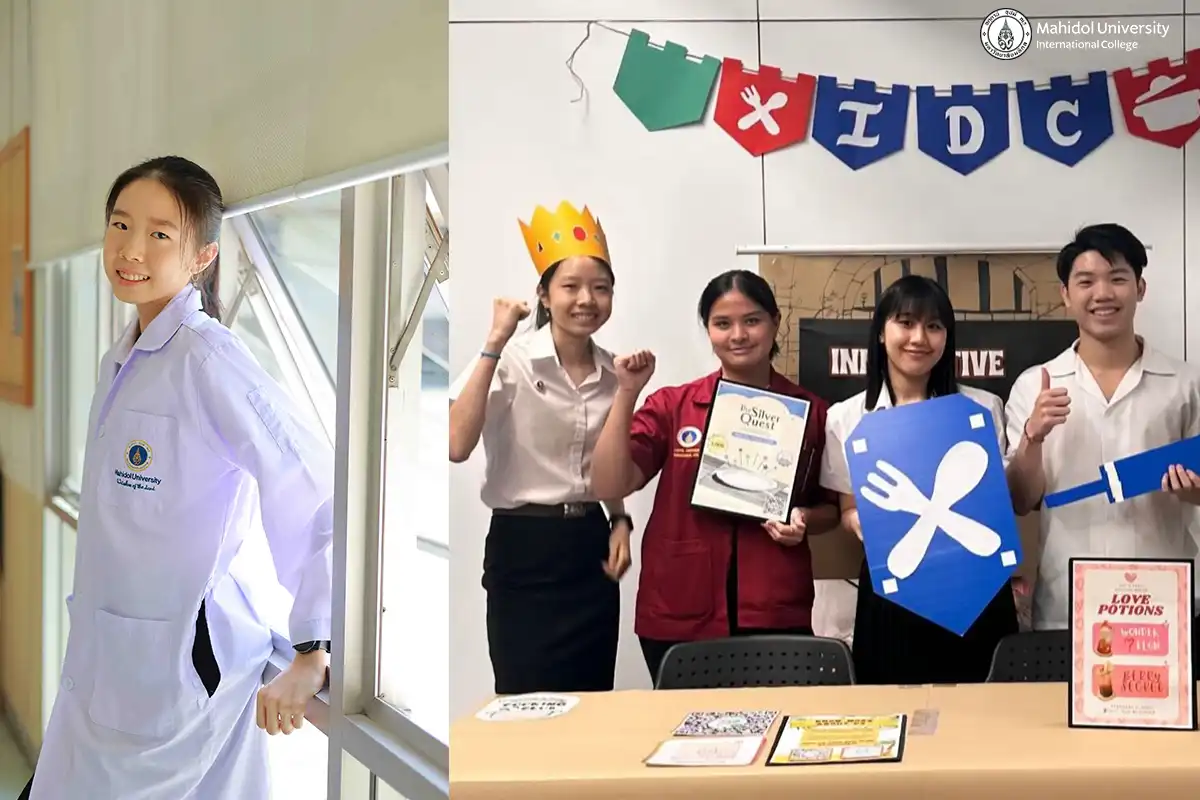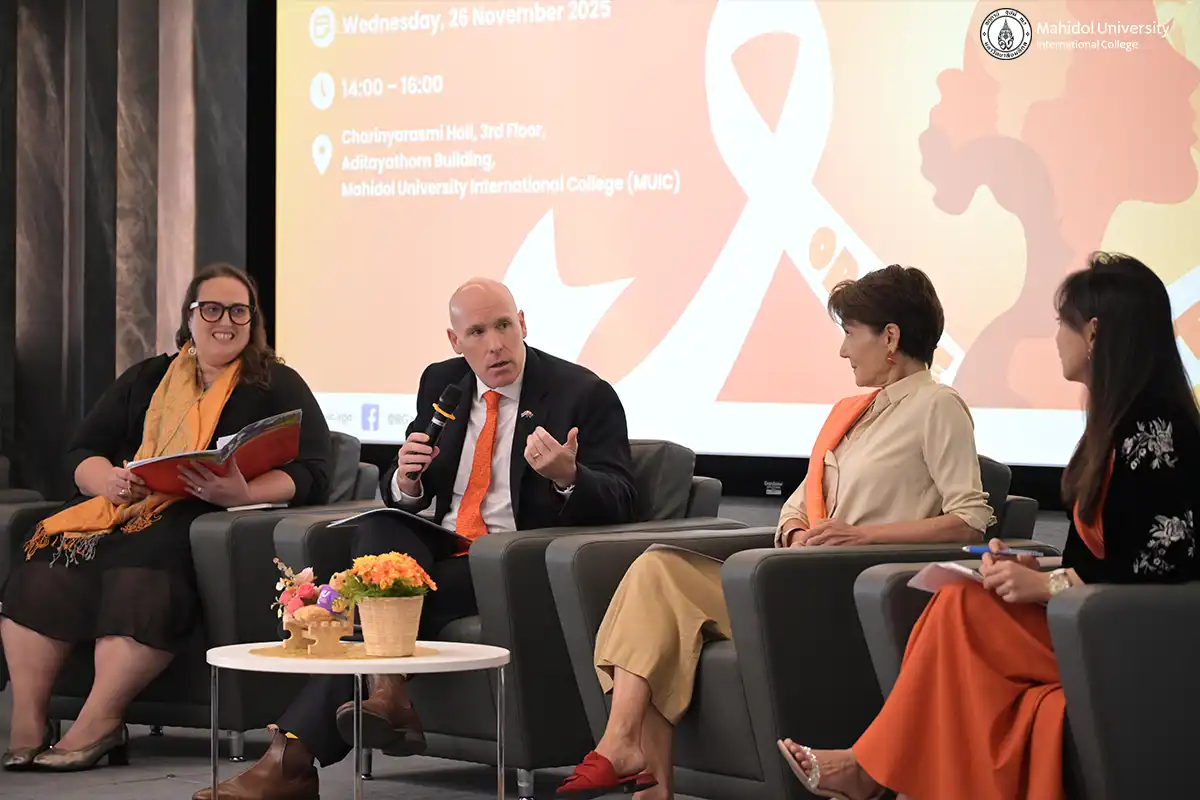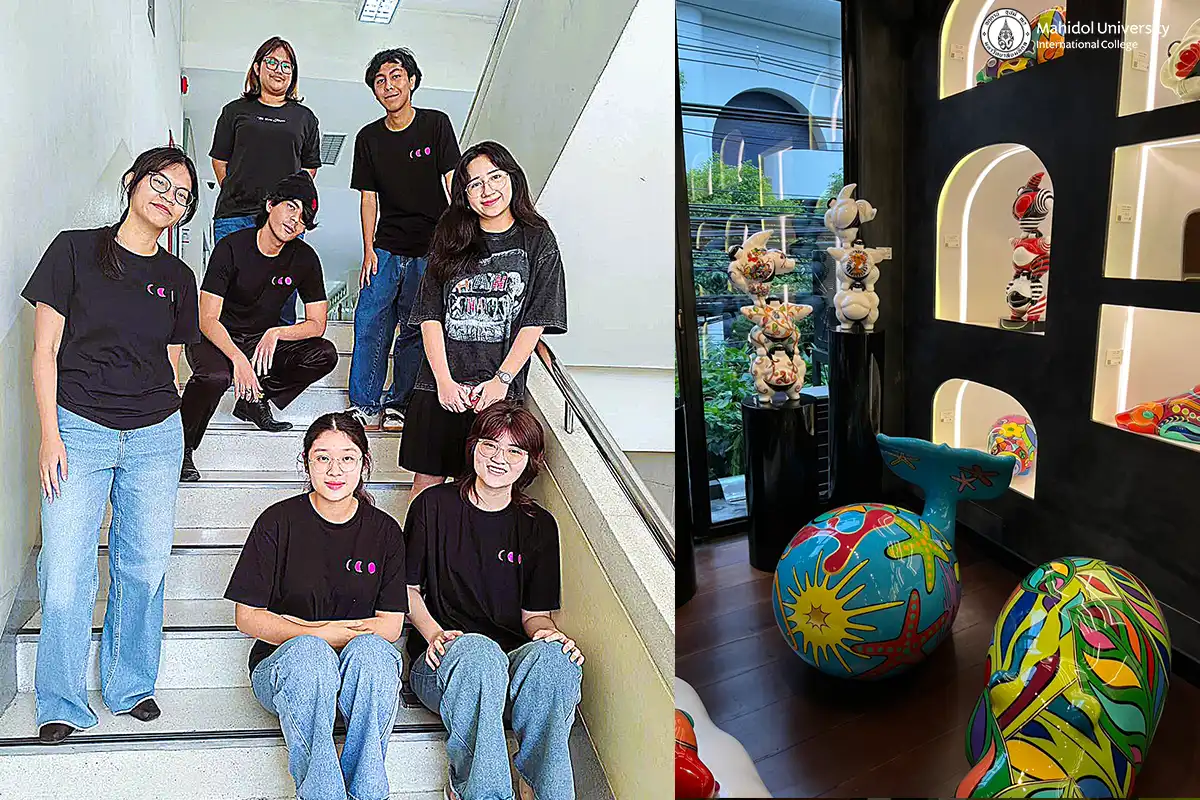Discovering the Multicultural Wealth of Bangkok’s Old Neighborhoods
May 31, 2025 2025-07-25 9:20Discovering the Multicultural Wealth of Bangkok’s Old Neighborhoods
For a group of Mahidol University International College (MUIC) students enrolled in ICIC 352 Postcolonialism: Diverse English-Speaking Cultures, the field trip to Bangkok’s European Heritage Sites on May 31, 2025 was an eye-opener: The old buildings and churches and quiet neighborhoods that are sometimes taken for granted turn out to be living proof of Thailand’s rich multicultural history.
Not only that, their teacher, Asst. Prof. Dr. Analiza Liezl Perez-Amurao of the Humanities and Language Division (HLD), showed to them during the trip that history and culture are indeed alive and well.
The students—most of whom were Intercultural Studies and Languages (ICIC) majors but also included several from other MUIC programs, as well—visited quaint but interesting places like the Kudichin Community in the Thonburi District, where Portuguese Catholic inhabitants resettled 400 years ago after the fall of Ayutthaya. Kudichin is now a quiet quarter where the Portuguese’s descendants still keep alive their cultural legacies through the exterior designs of their houses clustered around the Santa Cruz Church that their ancestors had built in 1770. From this community also originated meals and desserts that have become part of Thai food fare like khanom farang kudi chin, empanada (better known as curry puff) and thePortuguese-inspired dishes that Chef Chris, a fifth-generation Portuguese, prepares for his home-based restaurant’s customers.
There is also the well-known and oft-visited Baan Kudichin Museum, a living testament to the Portuguese legacy. This museum was, in fact, officially recognized by the Portuguese Embassy in Bangkok, with a former ambassador touring it at some point. Chef Chris and the owner of Baan Kudichin Museum are cousins.
Across the Chao Phraya River, the group also visited the Portuguese Embassy whose building’s construction dates back to 1860. Afterwards, the students took time to drop by Museum Siam which occupies the former Ministry of Commerce building constructed in 1922.
Other notable buildings they visited in the Bangrak District were the Old Customs House, one of the many Western-style buildings commissioned by King Chulalongkorn; House No. 1, a former French distillery; Louis Leonowen’s Warehouse; and Captain Bush Lane (now renamed Soi Charoen Krung 30) where several members of Bangkok’s European expatriates lived in the 19th-20th Centuries.
The field trip served as a first step in the ICIC students’ class project—they had to come back and do further research and interviews based on which they had to produce short video essays.
Ajarn Analiza described the impact of this field trip to her students as one that has helped open their eyes, making them understand that Bangkok is home to many European heritage sites that are often eclipsed by other tourist destinations. By visiting the identified spots, the students were able to apply the postcolonial theories and concepts learned in class to their video essays, understanding that despite the never-colonized Siam trope, the vibrant Thai capital city boasts of spaces that are truly European.
____________
The Intercultural Studies and Languages major (ICIC) is a truly multidisciplinary program that offers students concentrations in Literary and Cultural Studies, Foreign Language, and Ethics, Philosophy, and Economics. If you want to dive deeper into any of these concentrations, click this link and learn more about ICIC:
https://muic.mahidol.ac.th/eng/programs/undergraduate-programs/humanities-and-language/humanities-program/

